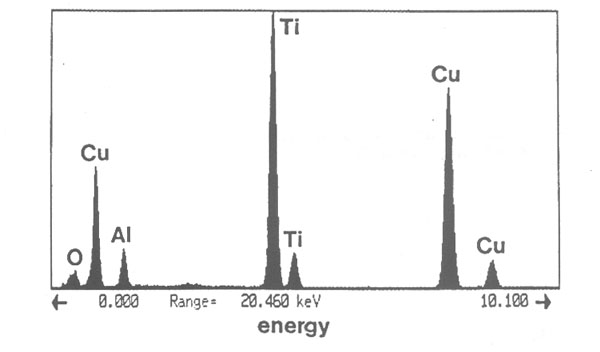
Name________________________________
Grade____________________/10
MAT SE 430
HOMEWORK # 9 - 1998
Due 3 December
1a. Using EDS in a TEM, the spectrum below is obtained over the range 0-10 keV from a single phase specimen. Indicate which is the only L peak in the spectrum. Explain how you determined this.

1b. After subtracting the background in the above spectrum, the peak intensities are, in arbitrary units:
TiK - 988
CuK - 867
AlK - 146
OK - 74
The Cliff-Lorimer ratios (for weight fractions) for these K spectral lines are:
k(Ti/Cu) = 1.158
k(Al/Cu) = 0.630
k(O/Cu) = 1.473
Determine the atomic fractions of the four elements in the specimen, assuming that these are the only ones in the material. (You'll need to refer to a periodic table.)
1c. Would the same spectrum as in part (a) result for this material if the EDS measurements were performed in an SEM? If not, how would it differ?
1d. Would the same spectrum as in part (a) result for this material if WDS measurements were performed in a TEM? If not, how would it differ?
1e. Would the same spectrum as in part (a) result for this material if WDS measurements were performed in an electron microprobe (EPMA)? If not, how would it differ?
2. Circle the techniques or instruments below that rely on incident x-rays interacting with a specimen.
Put a box around the techniques or instruments below in which electrons are detected as the signal.
(If you feel that any answers are ambiguous, please explain.)
EDS
WDS
XRD
XRF
SEM
TEM
EPMA